Naginata In history and modern days
Naginata 薙刀, looks basically like a katana with long handle, is actually one of famous weapon in Japanese history. It's a pole weapon, but it is often be seen as something primarily practiced by women. However, the Naginata was a preferred long-handled weapon used by Samurai during the Nanboku-cho period, a time of civil war that divided Japan for half a century. In this article, we will explain some basic knowledge about the Naginata, including its history, the difference between it and the Nagamaki, and different types of Naginata.
Table of Content
- What is a Naginata 薙刀?
- The History of the Naginata
- Types of Naginata
- Famous Naginata in History
- Naginata Women's weapon
What is a Naginata 薙刀?

A Naginata (薙刀 / 長刀) is a type of long-handled weapon in Japan, and it is considered a Japanese sword. It is characterized by a long handle and a wide blade, and it was designed as a weapon to "mow down" enemies. Naginata looks pretty similar to the "GuanDao" from China.
How long is a Naginata
Naginata has 3 major parts, the blade ( 穂), the handle (柄), and the handle tip (石突). The overall length of a Naginata ranges from 120-240 cm (47-94 inches).
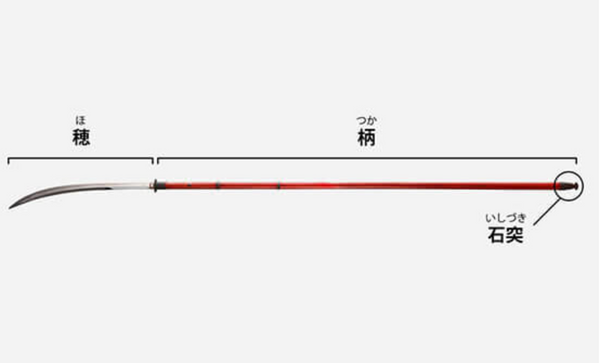
The Blade of the Naginata 穂
The blade of the Naginata, also called the "ho 穂", generally ranges in length from 30-60cm (12-24 Inches) , but some could be 90 cm (35 inches). The shape of the blade changes over time and varies according to the owner's preferences, making it difficult to determine the era based on shape alone. The blade is usually single-edged with a curve towards the tip, but there are some with double-edged tips. The tang (nakago, the part that fits into the handle) is made longer than the sword for strength, and is generally about the same length as the blade. The groove (bohi), which is carved for the purpose of weight reduction, is usually carved about halfway down the blade, and this is called a Naginata-hi.
The Handle of the Naginata 柄
Generally, the handle of the Naginata ranges widely from 90-180cm (35 to 70 inches), and it seems there were various lengths depending on the height and skill level of the user. The cross-section is oval-shaped, and the Ishizuki 石突 (the tip of the handle) is often shaped like a crescent moon, and it is said to have been designed to be able to strike with the Ishizuki side as well.
The History of the Naginata
Naginata first appeared during the Heian period. It is notably featured in the historical literary work "Taiheiki 太平記," where it is the most mentioned weapon. Due to its wide reach and versatility in not only slashing but also thrusting and striking, the naginata became widely prevalent as a primary weapon during the Nanboku-chō period
Late Heian Period
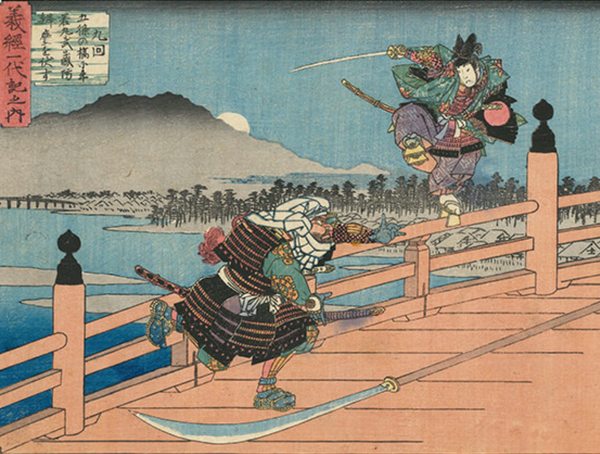
The Naginata rapidly spread from the late Heian period as a very powerful weapon in close combat. It evolved from a shape called "Shobu-zukuri 菖蒲造" with a long handle attached to the blade, the blade was widened to increase strength, the curve (Sori) was strengthened, and eventually the shape typical of the Naginata was established. The Naginata is also famous as the weapon of choice for Musashibo Benkei 蔵坊弁慶, a figure from the late Heian period.
Kamakura to Nanboku-cho Periods
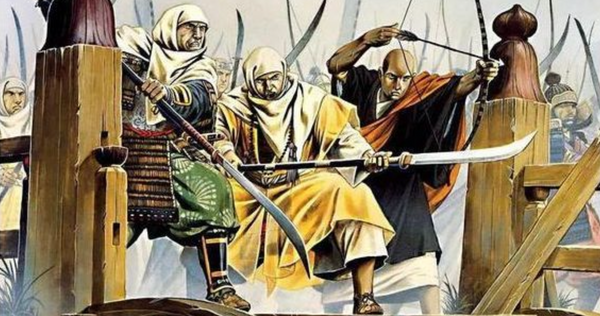
From the Kamakura to Nanboku-cho periods, combat was mostly individual battles. Although the Tachi was convenient on horseback, the Naginata, with its reach and high killing power, was a popular choice of weapon in ground combat.
Exquisite Naginatas made by famous swordsmiths were born, marking the golden age of the Naginata. The image of the Naginata as a weapon of the monk soldiers may come from the fact that many of the monk soldiers depicted in the drawing of this time are shown holding Naginatas.
Muromachi to Azuchi-Momoyama Periods
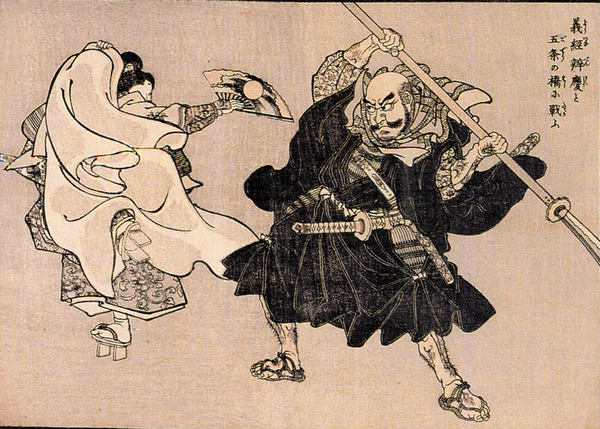
From the Muromachi period onwards, Japan entered the Sengoku period. The style of combat changed from individual to group warfare, and battles were fought between armies made up of generals and many foot soldiers.
In group battles with many foot soldiers around, there is a risk of injuring allies, and the advantages of the Naginata cannot be fully utilized. Yari (Spears), which can stab or swing down to strike the enemy in front, were more useful in this case, so the Naginata, as a long-handled weapon, gradually lost its place as the mainstream weapon.
Eventually, Naginatas that were no longer used on the battlefield began to be remake into Uchigatanas. This is called "Naginata-naoshi 薙刀直し", and as the Naginata had been active on the battlefield for a long time, many of them are of high quality, so people at that time will say that there are no dull swords in "Naginata-naoshi".
Edo Period to Present Day
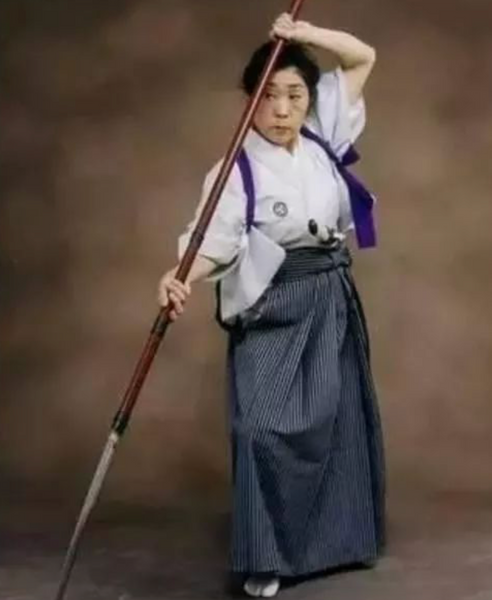
The Naginata, which had once declined, re-emerged in the Edo period as a martial arts technique and as a hobby for samurai women, with the advent of "Naginata-jutsu 薙刀術". However, as it was far from the long period of war, it never regained its status as a mainstream weapon, and has been passed down as a unique types of martial arts compared to katana swordsmanship.
During the Showa period, after passing through the Meiji and Taisho periods, "Naginata-do 薙刀道" was introduced as part of girls' physical education under the guidance of the government. After the Second World War, Naginata-do education was abolished, but the techniques as a martial art were handed down to future generations and continue to be passed down to the present day.
Types of Naginata:
The Naginata varies in types based on length and blade shape. Let's introduce five main types.
Large Naginata 大薙刀:

The large Naginata was frequently produced during the Nanboku-cho period when great swords were popular. At its peak, some had blades that were as long as five shaku (about 150 cm). However, if the total length of the blade and handle combined is longer than that of a regular Naginata, it's called a large Naginata, regardless of the blade length. There are historical records showing weapons of the same blade length being called a large Naginata in one case and a small Naginata in another.
Small Naginata 小薙刀:
With the emergence of the large Naginata, the traditional Naginata were distinguished as "small Naginata." If you stand the handle on the ground, and it reaches about the height from the bearer's shoulder to ear, it's typically called a small Naginata.
Shizuka-shaped Naginata 静形薙刀:

Named after Shizuka Gozen, the consort of Minamoto no Yoshitsune, the Shizuka-shaped Naginata is characterized by its narrow blade and weak curvature. It's also called a "male Naginata."
Tomoe-shaped Naginata 巴形薙刀:

Named after Tomoe Gozen, the consort of Kiso Yoshinaka, the Tomoe-shaped Naginata has a wider blade and strong curvature, making it easy to slash with little force. Though it's also called a "female Naginata 婦人用薙刀," its wide blade requires substantial skill to handle. Therefore, it's not exclusively for those with less physical strength.
Chikushi Naginata 筑紫薙刀:

The Chikushi Naginata was commonly used in the Kyushu region, centering around the Daimyo of Chikushi, the Otomo clan. Its most prominent feature is its unique shape. The Chikushi Naginata blade does not have a tang; instead, it has a ring-shaped metal fitting called a "Hitsu." The handle is inserted and fixed into this Hitsu.
Difference between Naginata and Nagamaki
The Naginata and Nagamaki are both long-handled Japanese weapons. They have many things in common, making them difficult to distinguish. The difference is the Nagamaki is a weapon that evolved from tachi 太刀, specifically a "Odachi.大太刀" Unlike the Naginata, the Nagamaki's blade width is similar to a Odachi, and it has a handle of about 90 cm long. The entire Tsuka is tightly wrapped with thread for easy gripping.
Famous Naginata in History
岩融

"Iwatōshi" (岩融) is the beloved naginata of Musashibō Benkei (武蔵坊弁慶), known as a master of this weapon. Musashibō Benkei, who served under Minamoto no Yoshitsune, is famous for his valiant stand and demise in the Battle of Koromogawa (衣川の戦い), where he died standing after a fierce fight.
Iwatōshi, wielded by Musashibō Benkei, who was known for his large physique and fully formed teeth at birth, was a colossal naginata with a blade length of about 3 shaku 5 sun (approximately 106 cm).
The creator of Iwatōshi is believed to be Sanjō Kokaji Muneshige (三条小鍛冶宗近), the same blacksmith who forged "Mikazuki Munechika," one of the "Tenka Goken" (天下五剣), or "Five Swords under Heaven." Sanjō Kokaji Muneshige is also renowned for creating "Kogitsunemaru" (小狐丸), a sword said to be forged in collaboration with a fox spirit during the Heian period.
Although it is commonly believed that Musashibō Benkei is a fictional character, a large naginata said to have been dedicated by him exists at the Ōyamazumi Shrine (大山祇神社) in Imabari City, Ehime Prefecture. This naginata is designated as an Important Cultural Property 重要文化財 of Japan.
権藤鎮教

"Gondō Shizunori" (権藤鎮教) is a famous naginata listed in the "Kyōhō Meibutsu Cho" (享保名物帳), a compilation of renowned swords by the Edo shogunate. It is one of the three celebrated works passed down through the Kuroda family, founders of the Fukuoka domain. The creator of this naginata was Taira Shizunori (平鎮教), a swordsmith from Takada in Bungo Province (now Bungotakada City, Oita Prefecture).
There are two theories regarding the origin of the name "Gondō Shizunori." The first involves an anecdote from when Kodera Kanbei (黒田官兵衛), also known as Kuroda Takahisa, was attacked by a tiger during the Korean Campaign. A retainer named Gondō saved Kodera Kanbei by slaying the tiger with a naginata, leading to the weapon being named after him.
The second theory is related to Gondō Heizaemon, a retainer of Mototane Takahashi (高橋元種), the lord of Nobeoka Castle, who sided with the Western Army during the Battle of Sekigahara in 1600 (Keichō 5). Gondō Heizaemon, following his lord's orders, defended Miyazaki Castle but ultimately faced defeat due to the Eastern Army's assault. It is said that he continued to fight with his naginata until the castle's fall, slaying 18 enemy soldiers before committing suicide. This event is believed to have inspired the naming of the naginata as "Gondō."
Naginata Women's weapon

People often associate Naginata with female samurai, and that's true. Sengoku period, yari replaced Naginata became the mainstream weapons for men in battle field. and Naginata was used by women instead, such as the lawful wives and mothers of warlords, to protect castles in the absence of their lords.
Unlike the yari, which required considerable strength for thrusting and striking, the Naginata's design allowed for effective use through momentum and gravity, making it an ideal weapon for women.
This shift was not merely a matter of practicality but also symbolized the role of women in samurai society. While men wielded katana, seen as their soul, the Naginata emerged as a symbol of female strength and resilience. In the peaceful Edo period, it became a part of the samurai women's dowry, signifying not only their martial readiness but also their status within the samurai hierarchy.
Final words:
Naginata, the long-handled weapon that has survived to modern times despite its decline, is a type of Japanese sword with a history of 1000 years. It was once treasured by samurai as a main weapon on the battlefield. With the changing times, it finished its role but was revisited as a martial art in modern times and has been passed down to today. Notably, the existence of the Naginata is very valuable due to its historical decline.





















